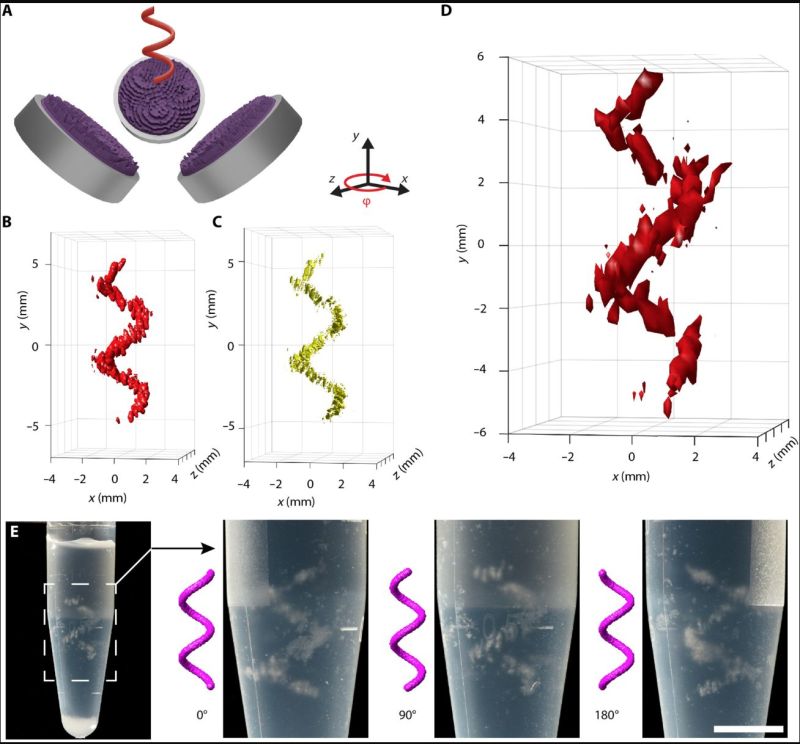Creating three-dimensional shapes from basic elements or even cells is an important research topic, with potentially many applications in the fields of medicine and general research. Although physical molds and scaffolding can be used, the use of ultrasonic holographs is in many ways preferable. Using ultrasonic sound waves into a liquid from two or more transducers shaped to interact in a predetermined manner, any particulates suspended in this liquid will be pushed into and remain in a specific location. Recent research by [Kai Melde] and colleagues has produced some fascinating results here, achieving recognizable 3D shapes in a liquid medium.
These are some of the most concrete results produced, following years of research. What distinguishes ultrasonic holography from light-based xolography is that the latter uses photon interference between two light sources in order to rapidly 3D print an object within the print medium, whereas ultrasonic holography acts more as a ultrasonic pressure-based mold. Here xolography is also more limited in its applications, whereas ultrasonic holography can be used with for example biological tissue engineering, due to the gentle pressure exerted on the suspended matter.
For ongoing medical research such as the growing of organs (e.g. for transplantation purposes), scaffolding is required, which could be assembled using such a technique, as well as the manipulation and assembly of biological tissues directly.
















Black Magic. Pure as RF witchery.
heh i feel like it’s a good counterpoint to RF witchery…it’s the same thing of interference patterns in oscillatory phenomena, except it’s physically perceptible. you can see it and interact with it directly, which can be a big aid to understanding it. i think it’s the same as RF but non-magical.
“ultrasonic pressure-based mold”
You cannot go very far with that analogy. To produce just 1 atmosphere (100 kPa) of pressure requires the object being manipulated to absorb 15 kilowatts per square centimeter: enough to boil water in a fraction of a second. They get away with it here because the object is very tiny, so the total power required is small, and it can dissipate it.
You can produce only tiny pressures with this, to avoid cooking the object. You’re “gently manipulating small light things”, not “injection molding”. You can’t scale this up.
You could blow me down with a feather, I proposed a similar technique to manipulate neurites over six years ago, development would obviously have consumed all the projects time, but good to see I was not being totally stupid, this does not need to be scaled up if used to manipulate tiny things.
This can be scaled up, because it’s got nothing to do with injection moulding. The point is to replace scaffolds for cell growth, by ‘locking’ the cells in their desired location suspended within the liquid growth medium (which can then be flowed for nutrient and waste transport independently of the cells) until the cell culture has grown enough to retain its macroscale structure, rather than needing a physical scaffold that either needs to be dissolved away or remain inert after implantation. Limits to scaling would be ultrasound transmission in the fluid medium and fidelity of the transducers to form useful structures (no point growing a large structure monolithically if it can no longer reproduce the fine detail necessary such as capillaries).
Shit this first first paragraph of this article was a lot for me to unpack. Has this been going on for awhile?
Thank you for all these comments. I’m jealous! (but in a good way) 😂 . I would love to understand most of that. I do think I understand enough to know, I’m really behind on a lot of stuff.